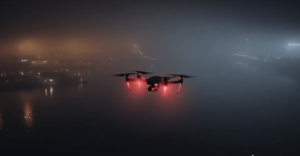
How High Do Drones Fly? (And why it doesn’t matter!)
How high can drones fly? Well, we leave no stone unturned in answering exactly that! From hobbyists, to commercial and military drones too.
How Far Can Drones Fly is a common question that often sparks curiosity among not just drone pilots and enthusiasts, but just about anyone these days.
The answer, however, isn’t as straightforward as one might think.
Different types of drones have varying flight capabilities. Factors such as the type of controller used, wind speed, visual line sight limitations, legal aspects and even the maximum range and of a drone’s battery life can significantly impact how far a drone can fly.
In this exploration of How Far Can Drones Fly, we’ll delve into these factors in detail to provide an insightful understanding about the impressive range capabilities of drones in 2023!
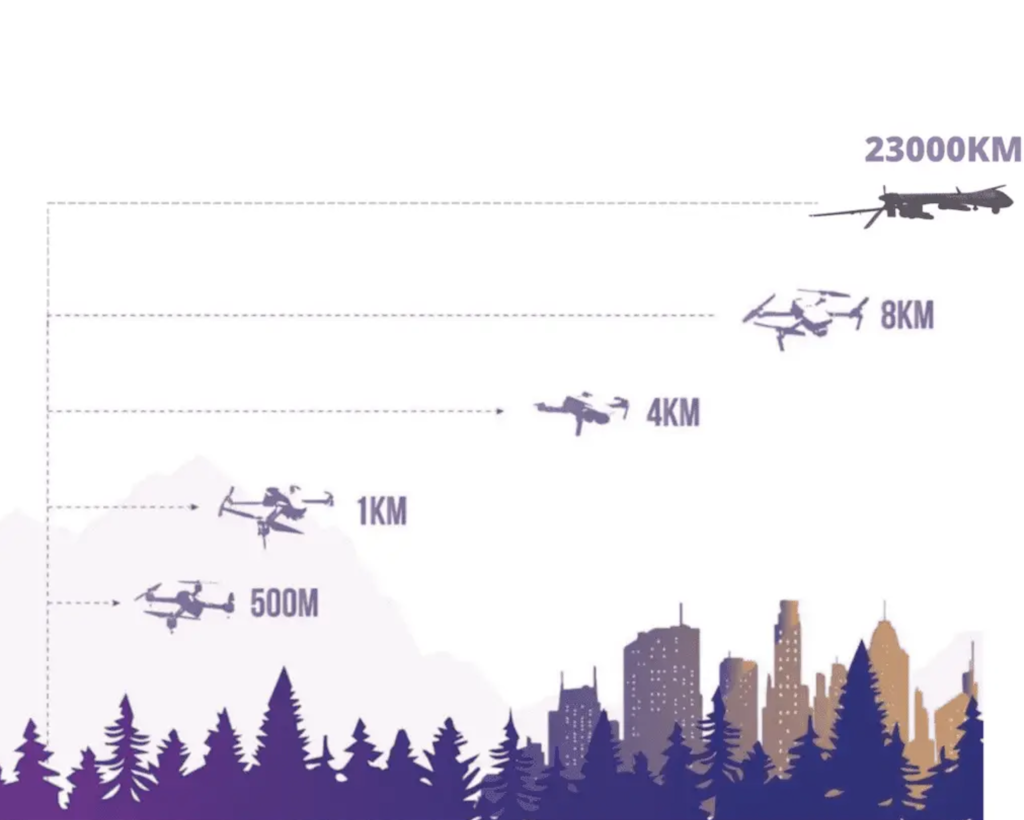
When discussing physical limits of how far drones can fly, it’s important to first clarify what kind of drone you’re discussing. Wether it’s for a hobby or drone racing, Quad-copter or Hexacopter, Military drones or Consumer? Because dependant on what one you are discussing, you may get a very different answer.
Different types of drones offer a wide range of capabilities, with their flight distances being one key differentiator. Let’s examine the spectrum from toy drones all the way up to long-range professional-grade UAVs.
Toy drones are typically entry-level devices that cater mainly to beginners, hobbyists and children. Their advertised flight range usually falls between 20 and 100 yards – perfect for indoor or confined outdoor spaces like backyards.
The next level up in our exploration brings us mid-level consumer drones which can fly much further than toy versions – approximately 0.25 to 1.5 miles under optimal conditions. These devices also provide better image quality thanks to superior cameras and stabilisation features. Discover DJI Mavic Pro Quadcopter specifications #.
In contrast, high-end consumer grade quadcopters such as those in the DJI Phantom series boast impressive maximum ranges extending up to around four-and-a-half miles away from the controller device when flying conditions are ideal. This extended reach is made possible by advanced communication technologies embedded within these machines. Explore more on how far can a DJI drone fly #.
Professional grade Unmanned Aerial Vehicles (UAV), often used for industrial inspections or large-scale agricultural surveys, have an astonishingly far-reaching capability extending upwards till twenty-five miles. This makes them invaluable tools w# vast areas need coverage.
Note: This information varies based on specific models’ designs, aerodynamics, and power sources among other factors. Find out more about ‘How Far Can Expensive Drones Fly’ (link removed per instructions).

When it comes to flying drones, one critical aspect that often gets overlooked is the visual line sight limitation. Whether you’re operating a toy drone or an expensive DJI Phantom series with long-range capability, this rule remains constant: your drone must always be within your field of vision.
No matter how far a drone can fly technically, keeping it within visible range of a drone itself significantly reduces risks associated with loss of control. Imagine losing signal from your remote controller while the device is still airborne – the consequences could be disastrous.
This principle aligns perfectly well with responsible practices promoted by various aviation authorities worldwide.
Beyond ensuring safety measures are met when flying drones, maintaining visual line sight offers considerable navigational benefits. Being able to see exactly where your device is at all times helps manoeuvre around obstacles more effectively. This becomes particularly crucial if you’re caught flying in areas populated with dense structures, trees, buildings, and other potential hazards.
Flying beyond visibility increases chances of errors in judgment regarding the distance to objects, potentially leading to crashes and damaging both valuable property and the surrounding environment.
While some advanced models like those offered by DJI boast impressive maximum ranges up to several miles, operators rarely ever need such distances due to the restrictions placed upon them. Under optimal circumstances, with no obstructions blocking the view, FAA regulations generally restrict drone visibility to approximately one-half mile (1,500–2,000 feet) from the operator’s position. Learn more about professional training here.

Operating a drone requires understanding the concept of controller range. This term refers to the maximum distance at which you can control your flying drones, such as the DJI Phantom series known for their longest range among consumer-grade quadcopters.
Different models of many drones have different ranges due to variations in design and technology. For instance, some expensive drones boast longer controller ranges thanks to advanced technologies integrated into them.
Environmental elements also significantly impact how far your drone can fly while maintaining control. Obstacles like buildings or trees could interfere with signal transmission between the remote control and drone, thus reducing its effective operational distance.
Awareness about these limits is crucial for safe drone flight operations; it helps prevent situations where a device might go out of sight or lose connection with its remote-control system – an unmanned aerial vehicle going rogue due to loss of command signals would be dangerous indeed.
Beyond safety concerns, this knowledge allows more efficient use of battery power during flights since operating within optimal distances reduces strain on both communication systems and propulsion mechanisms leading to long battery flight times.

The realm of long-range drones extends beyond mere hobbyist activities. Their advanced technology and extended flight range have made them invaluable assets in various industries.
In the agricultural sector, these high-flying tools are revolutionising practices. Farmers employ long-range drones to effectively oversee expansive fields, identifying issues such as irrigation mishaps or pest invasions early on through aerial photography.
When it comes to mapping and surveying large areas, nothing beats a drone’s eye view. These unmanned devices offer an efficient way to gather geographical data over vast territories, providing accurate topographic maps essential for construction planning, environmental research, and disaster management strategies. Here’s more about how drones aid in mapping efforts.
Drones with extensive flying ranges aren’t just toys; they’re also security guards. They provide law enforcement agencies with a safe means of conducting surveillance operations without putting personnel at risk. Learn more about their role in safety operations here.
Pioneering companies like Amazon see potential not only in the skies but also in delivery services. With the DJI Phantom series leading the pack due to its longest range capability among consumer-grade quadcopters (read up on becoming a professional drone pilot), this innovative approach could transform last-mile deliveries by reducing costs while increasing efficiency. It’s crucial, though, that we remember that with great power comes responsibilities, including understanding controller range limitations and adhering to sight limitation rules when you’re flying your device safely and legally.
Remember that despite all these practical uses, there still exist regulations that need to be followed to ensure both public privacy and safety remain intact during flights. So next time you think of sending out a package via drone, make sure you are well-versed in the laws surrounding un
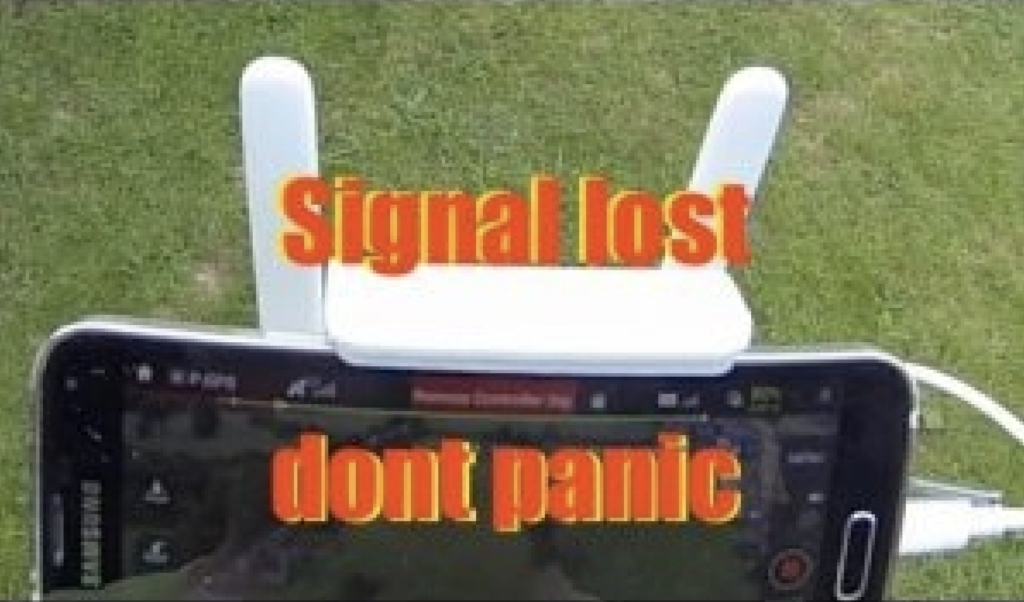
The thrill of flying a drone can quickly turn into panic when your device ventures out of its maximum range or sight limitation. It’s essential to understand how drones behave in such situations and what actions you, as the operator, should take.
In most cases, modern drones are equipped with fail-safe features that kick in once they lose signal connection with their controllers. A common feature is the “Return-to-Home” (RTH) function, which gets activated automatically on most drones upon losing signal with remote controller. This mode guides your drone back to its original launch point using GPS technology.
The effectiveness of this feature depends on various factors, including battery life and obstacle detection capabilities. DJI Phantom 4 Pro, for instance, comes packed with advanced obstacle avoidance systems ensuring a safe return even through complex terrains.
If your drone loses connection mid-flight, don’t hit the panic button. Most drones come pre-equipped with safety mechanisms like RTH mode, but it doesn’t mean you sit back and relax entirely.
Maintaining visual contact whenever possible is crucial, along with avoiding areas where signal interference may occur – near tall structures or power lines, for example. Following responsible flight practices ensures not just better control over your machine but also prevents mishaps from occurring due to loss of connectivity.
Losing control over an airborne object poses potential risks, including damage to property or injury if it crashes unexpectedly below. Moreover, there could be legal repercussions too; fines or penalties depending on local laws governing aerial operations, so always ensure you’re flying responsibly within designated zones only. Check out our resources for obtaining a drone pilot certification.
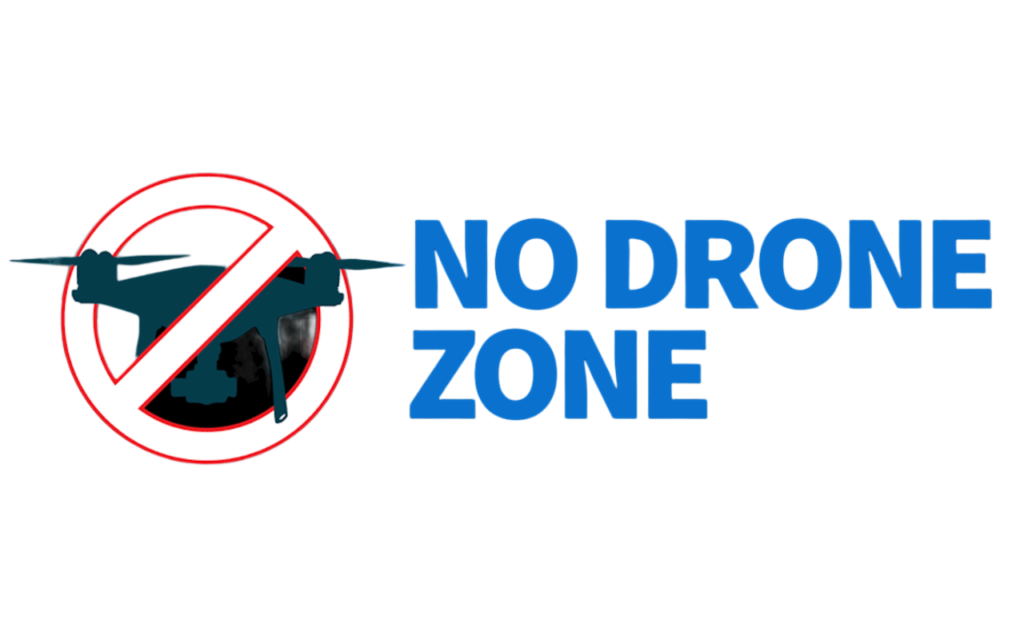
The realm of drone operation is riddled with legal complexities that vary across different regions. It’s paramount to comprehend these regulations before you embark on your journey as a drone pilot, whether for leisure or business.
Distinguishing between controlled and uncontrolled airspace is vital in the world of commercial drones. The FAA regulates both types of airspace in the US, and it is essential to obtain authorisation from them if operating near airports or other sensitive areas. Drones can generally soar freely within uncontrolled airspace without specific permissions; however, if you intend to operate in controlled airspaces near airports or other sensitive zones, FAA authorisation becomes mandatory.
To ensure compliance with all rules and avoid potential penalties such as hefty fines or even imprisonment depending on violation severity, always stay informed about local laws and follow them strictly when flying drones.
In certain scenarios like automated flight planning – which entails pre-programmed flights using GPS coordinates – additional requirements apply under Part 107 rules. This might involve submitting an operational risk assessment detailing how potential hazards will be mitigated during flight operations. Gain insight into becoming an expert drone operator here.
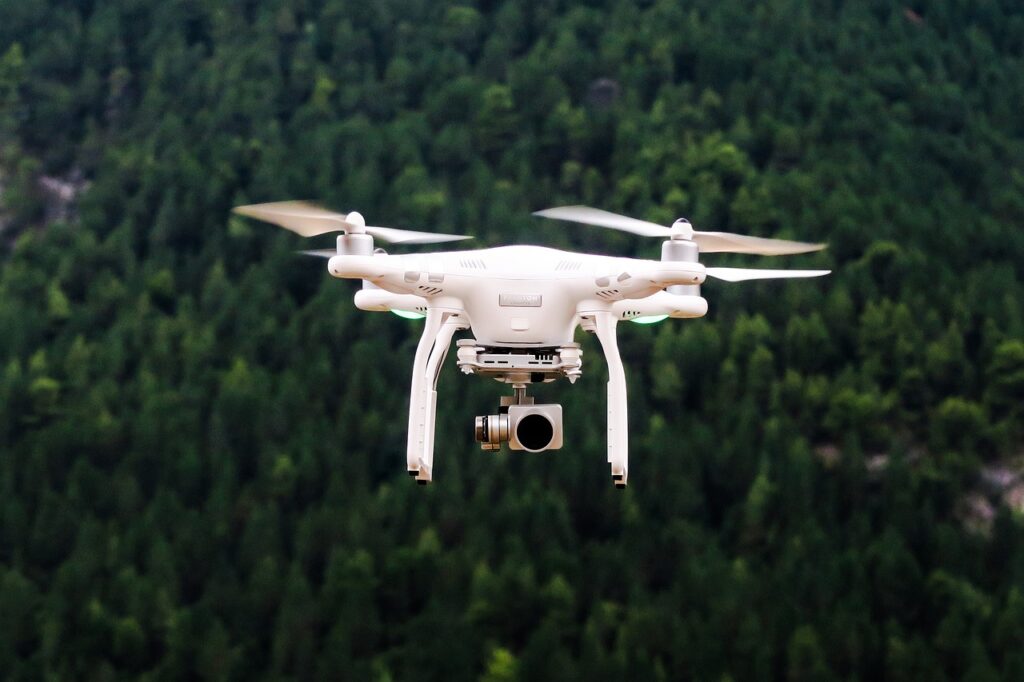
DJI’s renowned Phantom series is a marvel in the world of consumer-grade quadcopters. Its long-range capability sets it apart, providing users with unmatched control and image quality even at great distances.
A shining star within this lineup is the DJI Phantom 4. This drone showcases an impressive controller range that extends up to approximately 5 kilometers (or around 3.1 miles) under ideal conditions.
This remarkable distance coverage owes much to its OcuSync transmission technology integration, which ensures stable connectivity over vast expanses. Add on top of this an extended flight time – about 28 minutes per charge – and you have yourself a device perfect for extensive aerial photography or geographical mapping tasks.
Firmware settings are pivotal when looking to enhance your drone’s performance potential. Fine-tuning these parameters can significantly improve both responsiveness and flight stability when during flights, thus making every moment airborne count. For further guidance on maximising your drone’s performance, please refer to our comprehensive guide.
Beyond enhancing flight dynamics, certain tweaks may also extend battery life by optimising power management options, while others could help overcome latency issues potentially limiting maximum altitude or range capabilities. Find useful maintenance tips here for keeping your DJI drones in prime condition.
Technical prowess aside, legal considerations must not be overlooked when operating long-range drones like those from the DJI Phantom series. These devices might boast substantial travel distances, but local laws often dictate restrictions concerning how far they can actually legally fly out from their controllers’ positions.
In many cases, such regulations mandate maintaining visual contact with one’s drone throughout its entire journey – known as Visual Line Of Sight (VLOS). Being aware of these rules helps ensure safe operation while leveraging advanced features offered by high-end models like those belonging to the esteemed Phantom lineup. Learn more about FAA guidelines regarding VLOS operations here.

High-end, long-range drones can travel up to 25 miles under ideal conditions.
In the US, drones must stay within visual line of sight, which is typically less than half a mile.
The flight time varies by model. Some consumer-grade drones have battery lives that allow for around 20-30 minutes of flight time.
Flying above 400 feet risks interfering with manned aircraft and violating Federal Aviation Administration regulations.

So, you’ve journeyed with us through the world of drones and their impressive flight capabilities.
From toy drones that barely make it across your backyard to long-range powerhouses capable of covering 25 miles in a single trip.
We’ve explored how far can drones fly, the importance of visual line of sight, sight limitation in drone technology, controller range in drone operation, and practical uses for these high-tech devices.
You are now aware of the consequences if a drone goes beyond its full operating range and how to forestall this by augmenting its own maximum speed, maximum flight range, duration and maximum altitude.
The legal aspects are clear too – where you’re allowed to fly them, potential penalties for illegal flights, and automated flight planning requirements.
All this knowledge will surely come in handy whether you’re flying a DJI Phantom series or any other type of drone.
But remember – while knowing about your gadget’s capability is essential, using it responsibly should always be a top priority!
Related Post’s

How high can drones fly? Well, we leave no stone unturned in answering exactly that! From hobbyists, to commercial and military drones too.
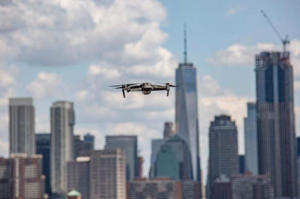
Navigate New York drone laws with confidence. Understand federal, state, and local regulations for safe commercial and recreational drone use.
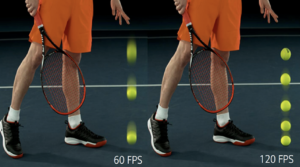
Drone cameras are revolutionising photography, surveillance, and various industries. But what do you need to consider before buying?